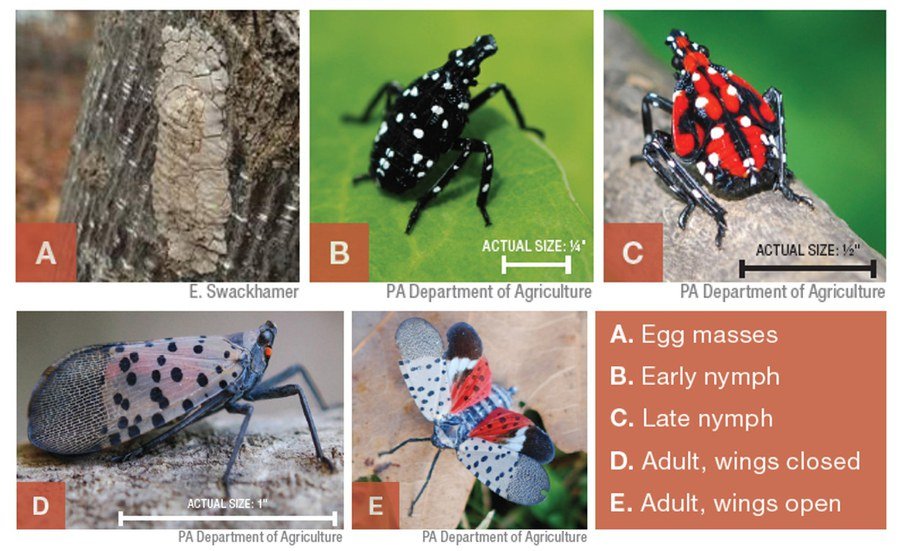
The spotted lanternfly is an invasive planthopper native to Asia. It feeds on a wide variety of plants, causing sickness and death, and has the potential to greatly impact ecosystems and crops such as grapes, fruit trees, and maple trees. It was first reported in the US in Berks County in 2014. Since then, the lanternfly has spread to other counties and threatens to spread throughout the northern US.
The spotted lanternfly is likely to become a serious agricultural pest, and has already caused enormous damage to trees and plants in PA. It’s important for home and business owners to keep an eye out for infestations on their property. Here are some tell-tale signs of an invasion:
- Egg sacs on tree trunks and other smooth surfaces, including outdoor furniture and vehicles. Egg sacs are about 1 inch long. Fresh ones look like plastered mud, while older ones have vertical rows of seed-like egg cases.
- Seeping sap wounds on tree trunks, often with a fermented odor
- Patches of blackened soil and sugary secretions around the bases of trees
- Increased numbers of wasps and bees, which are attracted to the secretions
- Entire trees that look “wilted”
The spotted lanternfly is easy to recognize throughout its life cycle. In the spring, nymphs have black or red and black bodies with white spots. Adults are about 1 inch long. They have grayish forewings with black spots, and black and red-spotted hindwings with a bold white stripe.
If you find signs of the spotted lanternfly, it’s important to act immediately to protect your plants and trees. The expert staff at Corbo Tree can help you with any aspect of spotted lanternfly control, including identification, monitoring, proactive and ongoing treatments with the most effective insecticides, and removal. Exterminating these invasive pests is crucial for tree health in Pennsylvania and beyond.

